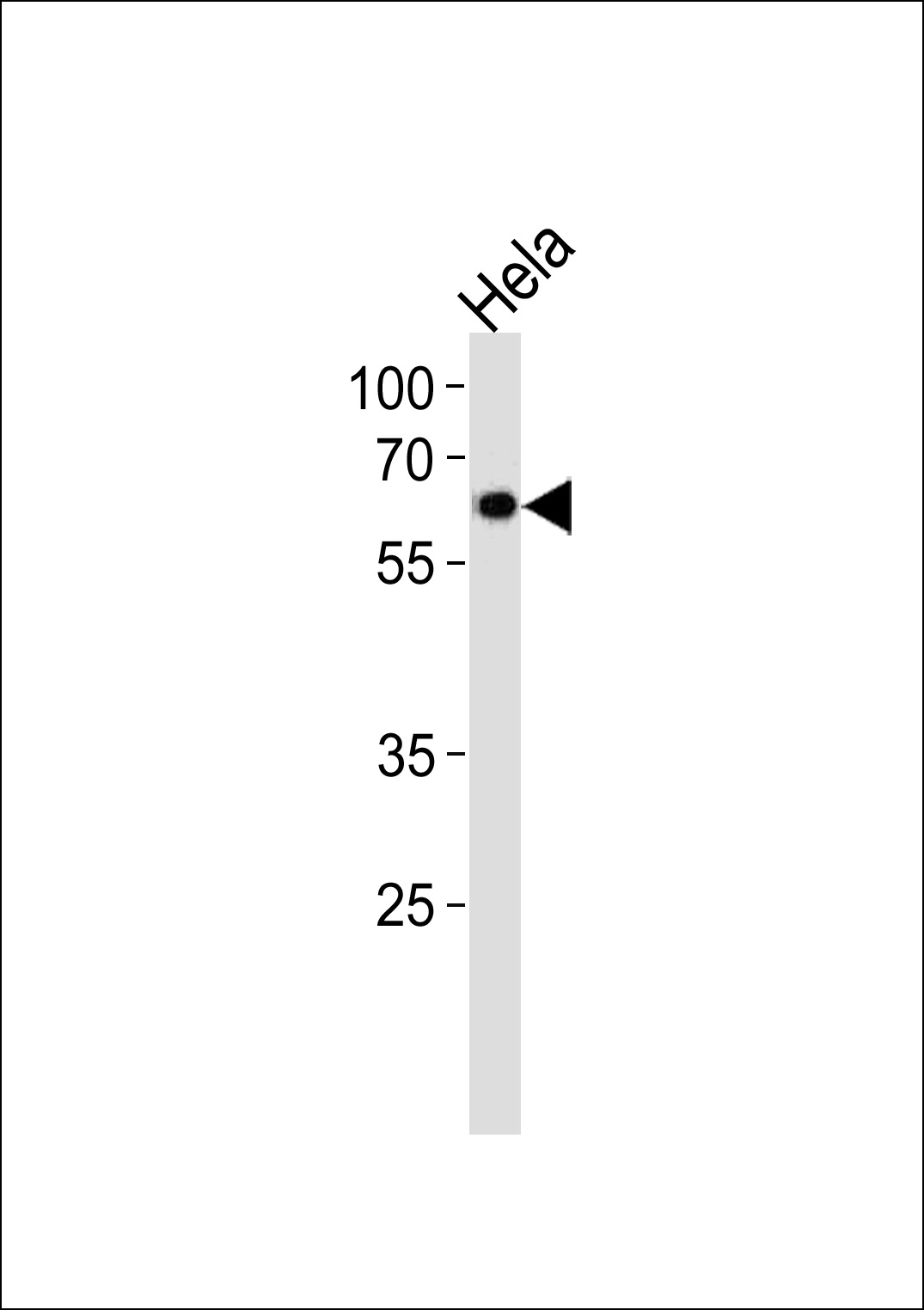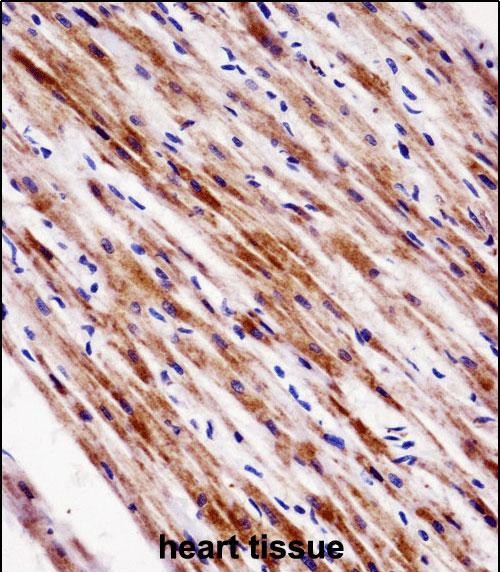产品名称
NR1D2 Rabbit Polyclonal Antibody (Center)
别名
Nuclear receptor subfamily 1 group D member 2, Orphan nuclear hormone receptor BD73, Rev-erb alpha-related receptor, RVR, Rev-erb-beta, V-erbA-related protein 1-related, EAR-1R, NR1D2
存储缓冲液
Purified polyclonal antibody supplied in PBS with 0.09% (W/V) New type preservative N. This antibody is purified through a protein A column, followed by peptide affinity purification.
Human Gene ID
NP_005117.3
Human Swissprot No.
Q14995
特异性
This NR1D2 antibody is generated from rabbits immunized with a KLH conjugated synthetic peptide between 266-294 amino acids from the Central region of human NR1D2.
稀释度
WB~~1:1000;IHC-P~~1:100~500
运输及保存条件
Maintain refrigerated at 2-8°C for up to 2 weeks. For long term storage store at -20°C in small aliquots to prevent freeze-thaw cycles.
背景介绍
This gene encodes a member of the nuclear hormone receptor
family, specifically the NR1 subfamily of receptors. The encoded
protein functions as a transcriptional repressor and may play a
role in circadian rhythms and carbohydrate and lipid metabolism.
Alternatively spliced transcript variants have been described.
组织表达
Widely expressed. Expressed at high levels in the liver, adipose tissue, skeletal muscle and brain. Expression oscillates diurnally in the suprachiasmatic nucleus (SCN) of the hypothalamus as well as in peripheral tissues
细胞定位
Nucleus {ECO:0000255|PROSITE-ProRule:PRU00407, ECO:0000269|PubMed:17892483, ECO:0000269|PubMed:17996965}. Cytoplasm {ECO:0000250|UniProtKB:Q60674}. Note=Phosphorylation by CSNK1E enhances its cytoplasmic localization. {ECO:0000250|UniProtKB:Q60674}
功能
Transcriptional repressor which coordinates circadian rhythm and metabolic pathways in a heme-dependent manner. Integral component of the complex transcription machinery that governs circadian rhythmicity and forms a critical negative limb of the circadian clock by directly repressing the expression of core clock components ARNTL/BMAL1 and CLOCK. Also regulates genes involved in metabolic functions, including lipid metabolism and the inflammatory response. Acts as a receptor for heme which stimulates its interaction with the NCOR1/HDAC3 corepressor complex, enhancing transcriptional repression. Recognizes two classes of DNA response elements within the promoter of its target genes and can bind to DNA as either monomers or homodimers, depending on the nature of the response element. Binds as a monomer to a response element composed of the consensus half-site motif 5'- [A/G]GGTCA-3' preceded by an A/T-rich 5' sequence (RevRE), or as a homodimer to a direct repeat of the core motif spaced by two nuclegotides (RevDR-2). Acts as a potent competitive repressor of ROR alpha (RORA) function and also negatively regulates the expression of NR1D1. Regulates lipid and energy homeostasis in the skeletal muscle via repression of genes involved in lipid metabolism and myogenesis including: CD36, FABP3, FABP4, UCP3, SCD1 and MSTN. Regulates hepatic lipid metabolism via the repression of APOC3. Represses gene expression at a distance in macrophages by inhibiting the transcription of enhancer-derived RNAs (eRNAs). In addition to its activity as a repressor, can also act as a transcriptional activator. Acts as a transcriptional activator of the sterol regulatory element-binding protein 1 (SREBF1) and the inflammatory mediator interleukin-6 (IL6) in the skeletal muscle (By similarity). Plays a role in the regulation of circadian sleep/wake cycle; essential for maintaining wakefulness during the dark phase or active period (By similarity). Key regulator of skeletal muscle mitochondrial function; negatively regulates the skeletal muscle expression of core clock genes and genes involved in mitochondrial biogenesis, fatty acid beta-oxidation and lipid metabolism (By similarity). May play a role in the circadian control of neutrophilic inflammation in the lung (By similarity).


